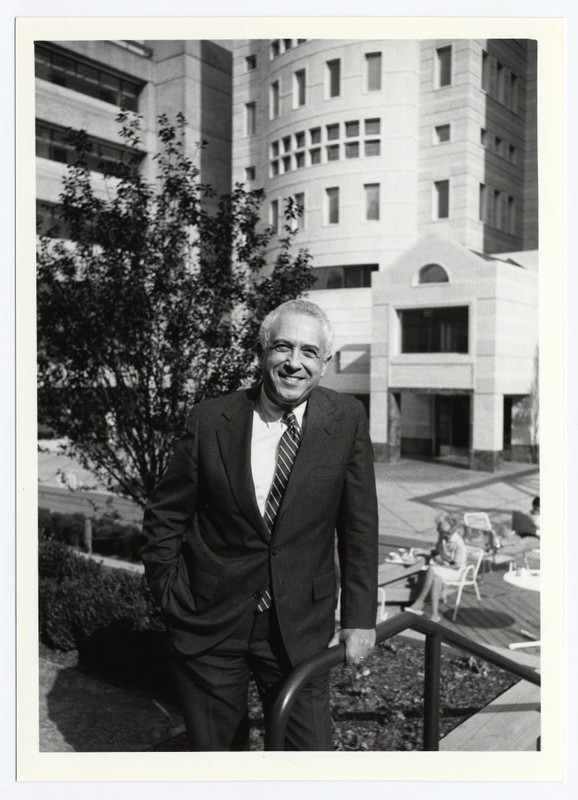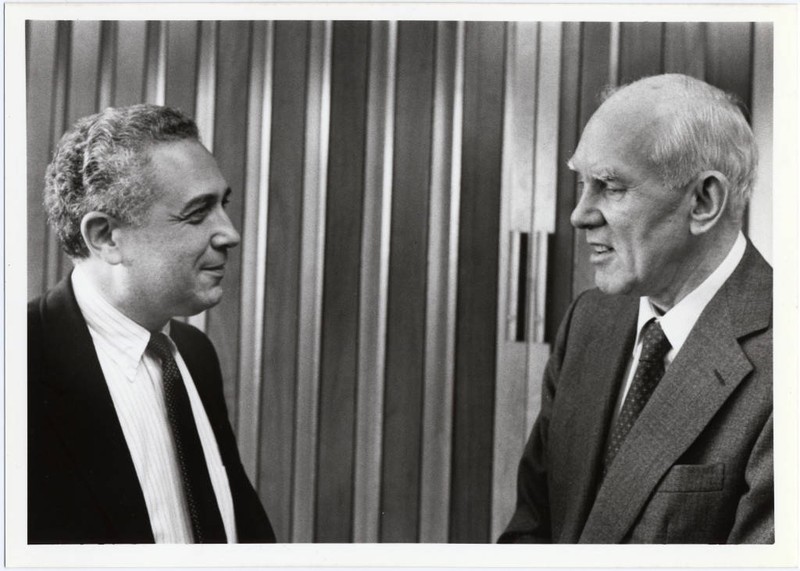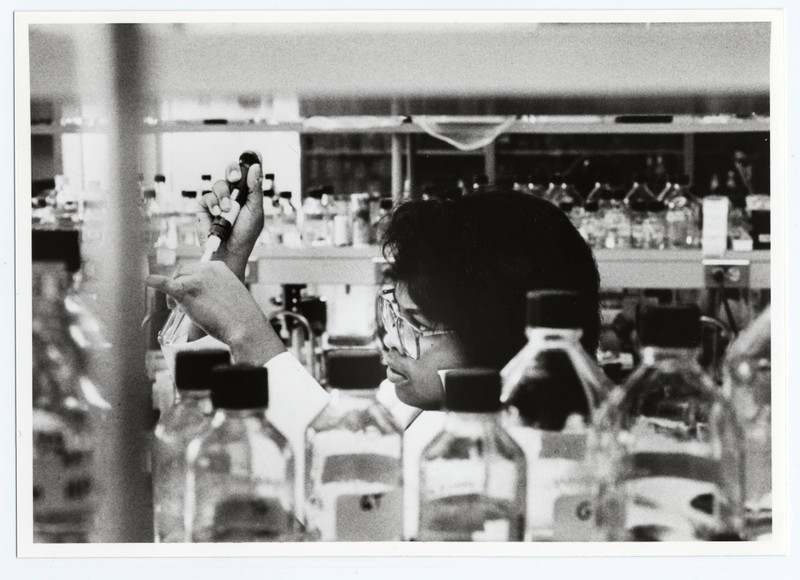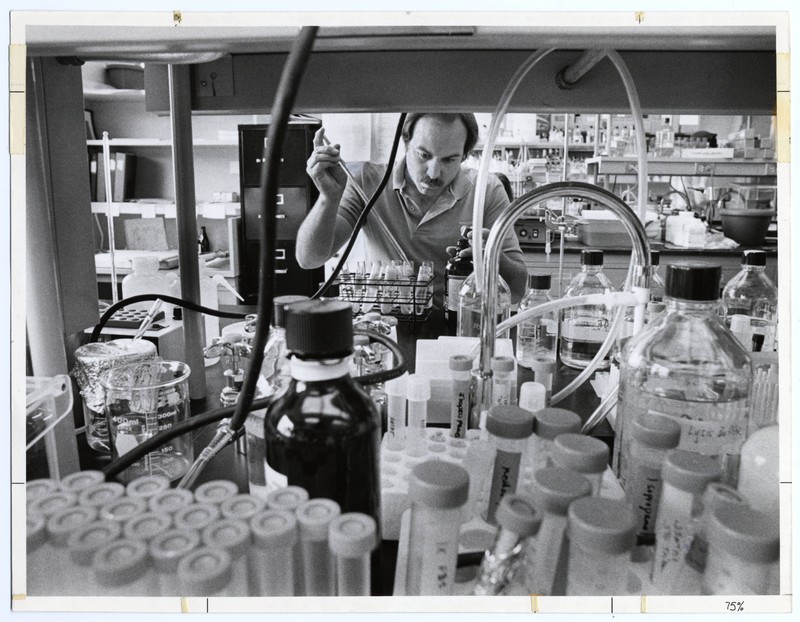Vollum Institute, OHSU
Introduction
Text-to-speech Audio
The Vollum Institute for Advanced Biomedical Research opened in 1987. The story of the institute begins in the early 1980s, when Leonard Laster, then the President of OHSU, proposed the formation of a new research center focused on “molecular medicine,” an emerging discipline that was transforming the scientific basis of patient care in the early 1980s. Designed by the architecture firm Zimmer Gunsul Frasca, the six-story, 67,000 square foot Vollum Institute building was made possible by a $20 million dollar gift from the late philanthropist and co-founder of Tektronix, Howard Vollum. The Vollum Institute, with its host of research laboratories engaged in basic sciences research, is a major center for investigating how the brain functions.
Images
Leonard Laster, M.D., OHSU President (1978-1987), in courtyard outside Vollum Institute for Biomedical Research, 1987.

OHSU President Leonard Laster, M.D., left, with Howard Vollum, right, 1987.

Researcher in a laboratory, Vollum Institute, circa 1980s.

Researcher using a pipette in a laboratory, Vollum Institute, circa 1980s.

Backstory and Context
Text-to-speech Audio
While serving on the board of Tektronix, Inc. a Beaverton-based technology company, OHSU University President Leonard Laster met and became friends with Tektronix’s legal counsel, James Castles. Castles and Laster secured seed funding for the proposed institute from the M.J. Murdock Charitable Trust. Tektronix co-founder Howard Vollum, along with his wife, Jean, joined the effort with a generous donation to support initial planning and development of the institute. Senator Mark O. Hatfield, then Oregon's senior U.S. Senator, secured federal funds to construct a building for the new laboratory. Following Vollum’s passing in 1986, an endowment to support the new institute’s research programs was established according to the provisions of his will.
Architect Robert J. Frasca, of the architecture firm Zimmer Gunsul Frasca, sought to create spaces that facilitated flexibility and collegial interaction. Inspired by visits to Oxford and Cambridge, Frasca created a series of common rooms alongside laboratories that encouraged circulation among researchers, including meeting rooms, eating areas, and gallery space. Open laboratory space was designed with an eye towards flexibility as research needs emerged over time. The glass-paned peak that caps the building was originally designed as a greenhouse.
The Vollum’s construction led to the development of the present courtyard between Mackenzie Hall, the Medical Science Building, and Richard Jones Hall. The terraced outdoor area, which was previously an alley behind Mackenzie Hall, quickly became a center of campus life.
Sources
Johnson, Barry. "Vollum Institute design melds best of two centuries." Oregonian (Portland, Oregon), May 3, 1987: 139. NewsBank: Access World News – Historical and Current.
Laster, Leonard. "How the Vollum Began." Vollum Institute for Advanced Biomedical Research Biennial Report, 1996-98. Oregon Health & Science University, 1998. Historical Collections & Archives, OHSU Library.
OHSU Digital Collections, https://doi.org/10.6083/M4MK6BHD
OHSU Digital Collections, https://doi.org/10.6083/M4MK6BHD
OHSU Digital Collections, https://doi.org/10.6083/M40000Q7
OHSU Digital Collections, https://doi.org/10.6083/M43R0RGQ
